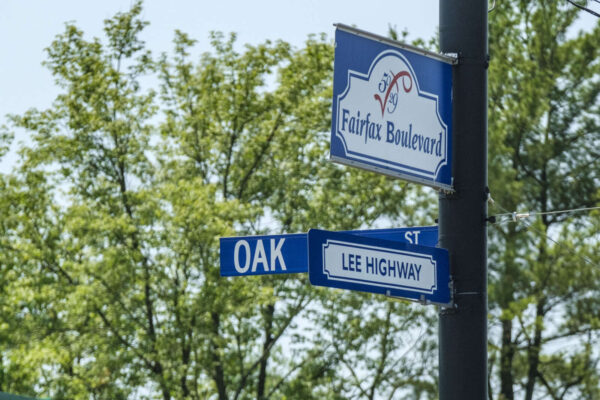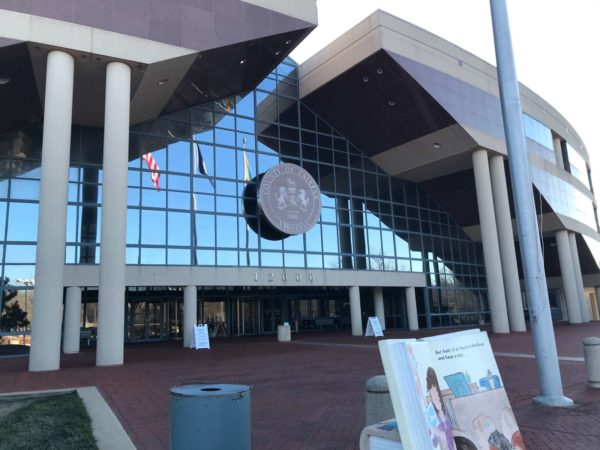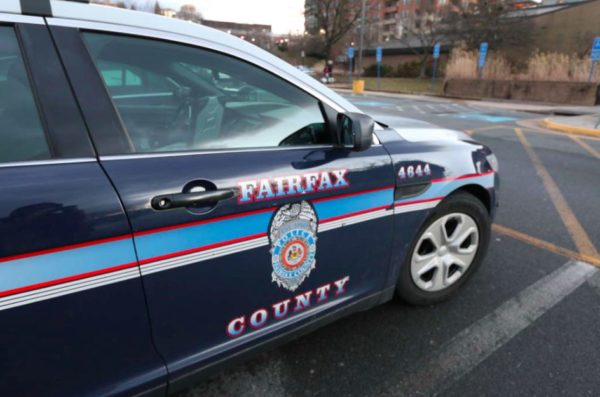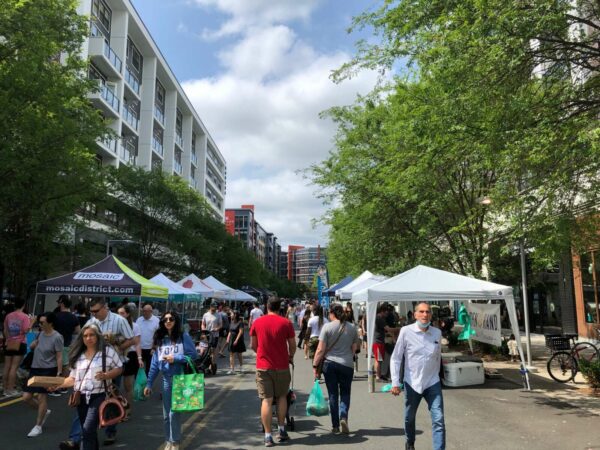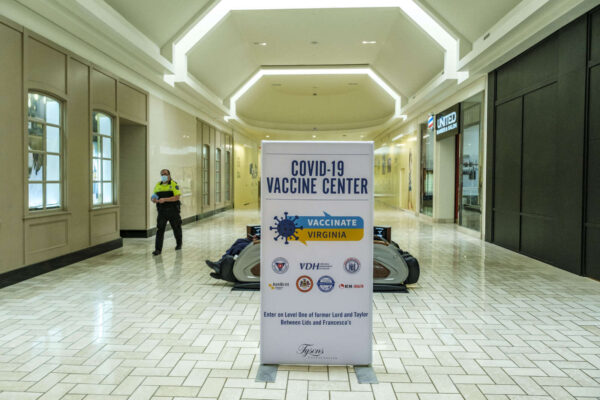America won’t celebrate its 250th birthday until 2026, but Fairfax County has decided it’s not too early to start planning the party.
At the Fairfax County Board of Supervisors meeting on Tuesday (July 13), Gunston Hall Executive Director Scott Stroh presented a report on behalf of a seven-person work group with recommendations for how the county could observe the U.S.’s semiquincentennial anniversary.
Recommendations touched on thematic, organizational, and practical considerations, among them adopting the word “commemoration” to describe the anniversary, making sure it reflects the “fullest American story,” and issuing a countywide survey of residents about what they want out of the occasion.
Additionally, the work group recommends having an organizational structure, a marketing and promotional plan, and a preliminary multi-year budget set by the end of the year.
“This commemoration offers an important and compelling opportunity to celebrate our accomplishments and progress as a nation and community, but also opportunities to foster cooperation, facilitate conversation, and inspire actions so that all can equally enjoy the benefits of life, liberty, and the pursuit of happiness,” Stroh said. “Fairfax County is distinctly positioned to lead this effort in Virginia.”
July 4, 2026 will represent 250 years of American independence from Britain, which is generally marked from the full adoption of the Declaration of Independence and formal start of the Revolutionary War. Both nationally and in Virginia, committees, organizations, and work groups are taking shape to start preparations for the anniversary.
Fairfax County is the only municipality in the Commonwealth to have initiated this effort to date, according to materials provided to the board.
“I’m glad we are leading by example,” Board of Supervisors Chairman Jeff McKay said.
The board established Fairfax County’s work group in October 2020. It includes representatives from Visit Fairfax, George Washington’s Mount Vernon, the Fairfax County History Commission, and the City of Fairfax Regional Library.
Going forward, the work group suggested that it could become a “more formal planning entity,” one with a larger membership that’s more diverse and more representative of the county as a whole.
Stroh anticipates the planning and the commemoration itself will be paid for through a variety of methods, including county funds, grants, state money, and private support.
In general, the board seemed pleased with the report, but it didn’t take any action beyond accepting the report. Instead, a board matter outlining possible next steps will be proposed when the board next meets on July 27, McKay said.
McKay emphasized that the commemoration should be inclusive and tell a “fuller American story.”
“I think many of us have heard of this notion of erasing history or redoing history,” McKay said. “In fact, [it is] quite the opposite. We are trying to bring to light the entire history and how we do better in the future.”
Lee District Supervisor Rodney Lusk made similar comments, saying his daughter recently remarked on many of America’s founders being slaveholders.
“That is a contradiction. That is a flaw,” he said, while reading off a portion of the report that positions commemoration as a chance to assess how the country is still striving to match its ideals with its actions.
“[This commemoration] is more than a chance, it’s an opportunity to actually do this,” Lusk said.
(Updated at 9:10 a.m. on 7/15/2021) Fairfax County is convening a “Confederate Names Task Force” specifically charged with making a recommendation about renaming the county’s portions of Lee Highway and Lee-Jackson Memorial Highway.
The Board of Supervisors approved the appointment of the 30-member task force on Tuesday (July 13).
The task force’s mission is to review the names of Lee Highway (Route 29) and Lee-Jackson Memorial Highway (Route 50) to determine if the roads should be renamed and, if so, what the names should be. A county-appointed facilitator will also work with the task force.
The roadways currently bear the monikers of Confederate generals Robert E. Lee and Thomas “Stonewall” Jackson.
This is a direct result of the work done by the county’s history commission to identify and inventory every place in the county named after a Confederate. The 539-page report noted that there were about 157 streets, parks, monuments, subdivisions, and public places in the county bearing names with ties to the Confederacy.
The most prominent were Lee Highway, about 14 miles of which runs through the county around Merrifield, Fairfax, and Centreville, and Lee-Jackson Memorial Highway. About 8.5 miles of that roadway runs through the county, including Chantilly and near Fair Oaks Mall.
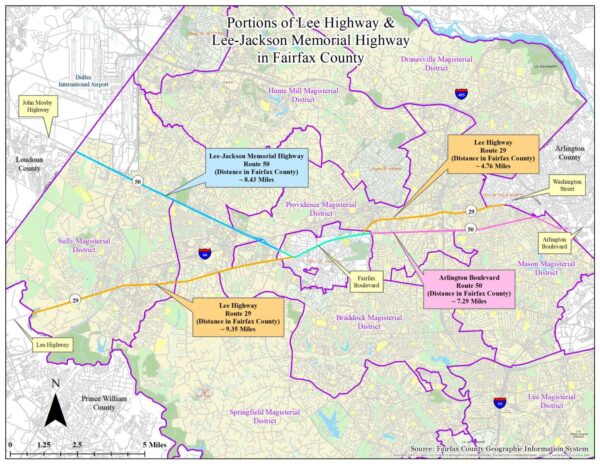
“In Fairfax County, our diversity is our greatest strength and it’s important that we honor and celebrate that diversity,” Board of Supervisors Chairman Jeff McKay said in the press release. “We cannot ignore what the Lee and Lee Jackson Memorial Highway names represent in our community and especially to our African American neighbors. The Confederate Names Task Force, which includes a diverse group, will examine and make recommendations on how both roadways can better reflect our values as we chart a positive path together for the future.”
The task force will meet monthly, starting later this month or early August, according to the agenda for the board meeting. The meetings will be open to the public, and the task force will seek input from the public prior to making a decision.
The group is expected to provide a recommendation to the county board by “the end of calendar year 2021.”
The task force is chaired by Sully District Planning Commissioner Evelyn Spain, who will be joined by 29 other members, including historians, civic organization leaders, homeowners’ association members, residents, professors, and faith leaders.
Spain says reevaluating the use of Confederate street and place names is necessary if Fairfax County wants to be inclusive and respectful of its increasingly diverse population.
“Naming highways after Robert E. Lee and Stonewall Jackson celebrates men who fought a war against the United States to perpetuate slavery,” Spain said in a statement. “One Fairfax requires us to look at these issues through an equity lens to understand how these names have negatively impacted our community and people of color as well as how Confederate names adversely impacts them today…I’m honored to be a part of the Confederate Names Task Force as we work toward building a more inclusive and equitable Fairfax County.”
If the task force recommends changing the names of the roads, the county will have to undergo a somewhat complicated process to actually make it happen — much like it was when Arlington renamed its portion of Route 29 and Alexandria renamed Route 1, which had been named after Confederate President Jefferson Davis.
If changes are recommended, the task force would need to provide two to five alternate names for each road. Then, the county board and task force will hold at least one public hearing to allow for comment about the potential change.
After the public hearings, the board will then vote on whether to take the task force’s recommendation. A timeline laid out back in May projected that could happen in early 2022.
If the board votes to change the highway names, it would then submit a resolution to the Commonwealth Transportation Board requesting the changes while also committing to paying for the signage.
If that’s approved by the Commonwealth, the board has to pass a budget item for the cost of the signs, and an interdepartmental working group would set up a timeline for the actual switching out of signs and, finally, officially changing the roads’ names.
The working group will also coordinate with other jurisdictions on their name changes.
Fairfax County will conduct a “comprehensive review” of the county’s response to the COVID-19 pandemic.
At today’s (July 13) Board of Supervisors meeting, Chairman Jeff McKay proposed as a board matter to have County Executive Bryan Hill review how county agencies responded to the challenges of the pandemic, how operations were affected, and how operational changes impacted the community.
The review will take place in two parts. The board directed staff to deliver a report with conclusions, recommendations, and areas of improvement in February 2022, and a follow-up is anticipated since the pandemic is still ongoing.
The motion passed unanimously.
“We did an amazing job [dealing with the pandemic],” McKay said, but he acknowledged that a review is needed since “there’s much to be learned about the county’s response and how we can improve upon that for the future.”
McKay also noted that a review is already essentially under way, but this formalizes the process and sets a deadline on it.
Hunter Mill District Supervisor Walter Alcorn agreed with the effort and asked the county executive not to pull any punches.
“I ask the county executive not to shy away from identifying challenges…[particularly] those in the labor market that were attributed to the pandemic and what happened after,” Alcorn said.
As noted in McKay’s comments, more than 75% of Fairfax Health District residents 18 years or older have received at least one vaccine shot. That’s above both national and state averages.
However, the county continues to face some challenges in convincing those who are still hesitant to get vaccinated.
When it comes to addressing COVID-19’s economic impact, the county has provided assistance with rent, food, and other basic needs to more than 10,000 households and helped get permanent housing for 400 individuals who were experiencing homelessness when the pandemic began, according to McKay’s board matter.
The county has also distributed more than $52 million in small business relief funding through the RISE program and is offering $25 million in their PIVOT program.
While half of the RISE grants went to minority-owned businesses, those businesses still suffered “acutely” during the pandemic. What’s more, the Northern Virginia Black Chamber of Commerce recently said it felt neglected in the development of some of the county’s grant programs.
McKay said that getting a comprehensive report on Fairfax County’s COVID-19 response will help the county government “ensure we maintain the level of service and functionality our community expects” in any future large-scale crisis or emergency.
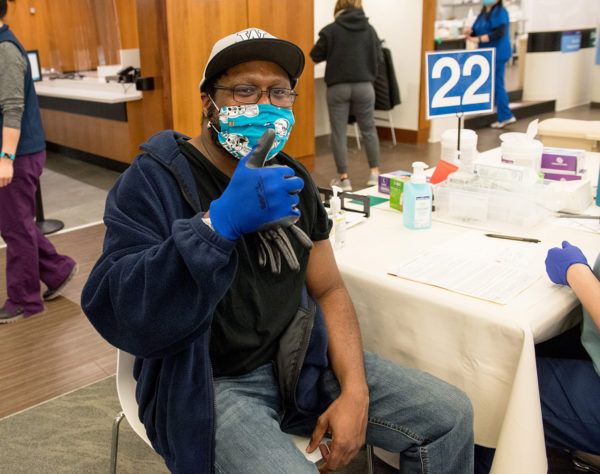
While Fairfax County’s COVID-19 vaccination rate has only incrementally crept up over the last several weeks, county officials believe their campaign to get as many people vaccinated as possible still has a ways to go before it hits a ceiling.
About 75.5% of people over 18 have had at least one vaccine shot in the Fairfax Health District, which includes the county and the cities of Fairfax and Falls Church. About 67% of all residents over 18 are considered fully vaccinated.
Both those numbers are above the national and state rates, but they have only gone up a couple of percentage points over the last month.
“Vaccination numbers are increasing more slowly than previously but we would not define it as ‘plateauing,'” Dr. Benjamin Schwartz, Fairfax County’s director of epidemiology and population health, said.
Schwartz says national data suggests that about 15% of the population say they definitely do not want to get a COVID-19 vaccine, but that percentage is “likely much lower here.”
“So there still are many in the county who are open to getting vaccinated,” writes Schwartz. “The challenges are addressing people’s concerns about the vaccine and making vaccination easy for people who may be less motivated [and] for whom vaccination just isn’t a priority.“
Messaging is key, says Dr. Amira Roess, a professor of epidemiology at George Mason University, when it comes to local jurisdictions concentrating their efforts on helping those folks get vaccinated.
“75% of folks being vaccinated is really good…and higher than the national average,” Roess said. “But…we have to shift to look at which groups have lower vaccination rates…find out why they haven’t gotten vaccinated and what are their questions.”
County data shows that, in terms of age, those over 55 years old have gotten their vaccine at a higher percentage than those in their 20s and early 30s. About two thirds of adults from 25 to 34 years old have gotten at least one dose of the vaccine compared to more than 80% of those over the age of 55.
While older folks becoming eligible for the vaccine earlier due to their increased vulnerability to the virus is likely a factor in that difference, it remains a concern that younger residents are less likely to get the vaccine than the county average.
To address that gap, county officials say they are doing targeted outreach at venues like barber shops, fraternities, sororities, and hair salons as well as placing ads on Tiktok and other social platforms.
Additionally, the county enlisted MC Bugg-Z of cicada rap fame for a new hip-hop song and video about the need to get vaccinated.
Health data also indicates that Black and Latinx county residents have gotten vaccinated at lower rates than white residents.
Roess says it’s on officials to better understand the concerns that have produced racial and ethnic disparities in who has received the vaccine.
“For a lot of African-American populations, they are part of this culture, this decades-long experience of being experimented on in really unethical trials,” Roess said. “So, there’s some real legitimate concerns there because of the history.”
She also notes that many folks work all day and are only available at night.
Fairfax County officials say over 300 sites currently offer the vaccine, including pop-up clinics every day of the week at schools, libraries, and apartment complexes. The county also employs 18 “vaccine navigators,” who go out into communities, food distribution events, and places of businesses to address concerns and help people sign up to get the vaccine.
However, in recent weeks, some services that were previously offered have ended, including a free shuttle service to the Mount Vernon Square vaccine equity clinic as well as several community clinics.
In addition, the clinics are only open to 7:30 p.m. at the latest. Most close between 5 and 7 p.m.
With nearly all COVID-19 cases, deaths, and hospitalizations now occurring among unvaccinated people, health officials are racing to expand vaccinations to counter the growing prevalence of variants that could spread more easily and cause more severe illness.
Of particular concern is the Delta variant, which is thought to be more contagious. As of Friday (July 9), Northern Virginia had reported 617 infections stemming from variants of concern, including 23 cases linked to the Delta variant.
Roess says the fear of the Delta variant may lead to more people getting vaccinated, but it could already be too late.
“It’s a…race between the Delta variant spreading and the vaccination rate,” Roess said. “What we might end up seeing is that by the time [more] people end up getting vaccinated, they are already exposed or infected by the Delta variant.”
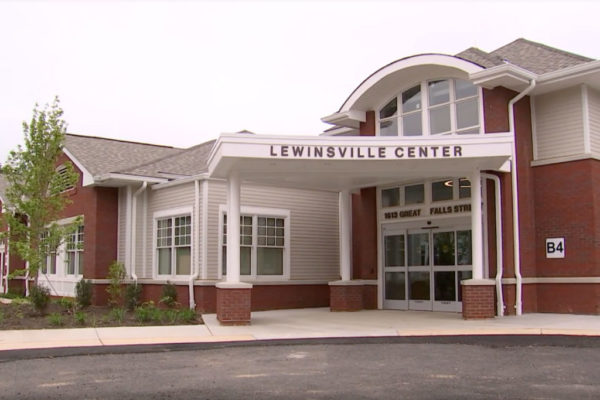
A majority of Fairfax County’s senior centers have reopened, allowing residents to come in to workout, play games, and use the computers.
Eight of the county’s 14 senior centers opened their doors on June 29 for the first time since March 2020 for “self-directed activities,” meaning those that are not led by staff like card games, ping-pong, billiards, working out in the fitness room, and using the computer labs.
The centers that are now open are:
- Herndon Senior Center (873 Grace Street, Herndon)
- Kingstowne Center for Active Adults (6488 Landsdowne Center, Alexandria)
- Lewinsville Senior Center (1613 Great Falls Street, McLean)
- Lincolnia Senior Center (4710 North Chambliss Street, Alexandria)
- Little River Glen Senior Center (4001 Barker Court, Fairfax)
- Lorton Senior Center (7722 Gunston Plaza, Lorton)
- Sully Senior Center (14426 Albemarle Point Place, Chantilly)
- Wakefield Senior Center at Audrey Moore RECenter (8100 Braddock Road, Annandale)
Residents can use any of the centers, even if it’s not their usual one. Lunch and bus service can also be provided by calling the individual center.
However, the centers currently have limited hours, operating from 9 a.m. to 4 p.m., Tuesday through Friday.
Residents also have to sign a liability waiver prior to visiting. Masks are still required for those who are not fully vaccinated, but are optional for those who are.
The remaining six centers will reopen on Sept. 7, with the exception of Hollin Hall in Alexandria, which is undergoing renovations.
At that time, all of the centers will revert to “full capacity,” including bringing back instructor and staff-led activities, a spokesperson for the county’s Neighborhood & Community Services says.
The senior centers cater to residents 50 years and older.
Three quarters of the Fairfax Health District’s population has received at least one dose of the vaccine, and those rates are even higher for those residents over the age of 55. About 93% of residents 65 to 84 years old have received at least one dose.
Vaccination efforts have allowed more and more county services and facilities to open back up.
“The county’s senior centers are a lifeline for our older residents, providing them with opportunities to exercise, play games, take classes and most importantly socialize with each other,” Hunter Mill District Supervisor Walter Alcorn said by email. “The pandemic was especially isolating for older adults, taking a toll on both mental and physical health. It is a very welcome step forward to open up several of the senior centers now and have the full reopening in September.”
Virtual activities, classes, and programs will continue to be offered throughout the summer for those who prefer to remain at home or want to participate in a staff-led activity. These include Tai Chi, crossword puzzling, and crafts.
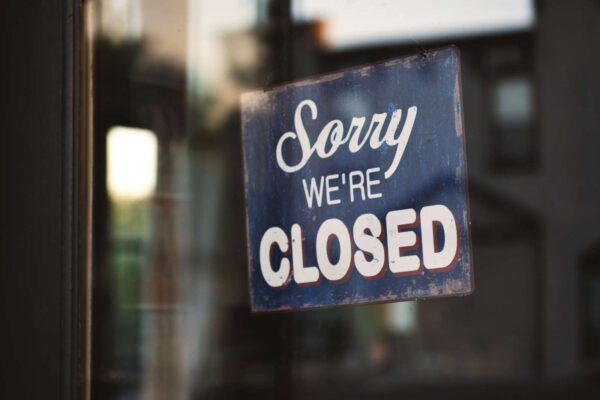
A new report shows that minority-owned businesses in Fairfax County and Northern Virginia as a region suffered more acutely due to the COVID-19 pandemic than businesses owned by their white counterparts.
The Community Foundation of Northern Virginia released a report in late June detailing findings and recommendations from their minority-owned business working group.
They found that at the end of 2019, there were 128,000 minority-owned businesses in Northern Virginia, which encompasses five counties, including Fairfax. That’s approximately 42% of all establishments in the region, well above the national average of 29%.
Of the 128,000 minority-owned businesses in Northern Virginia, about 55,000 are in Fairfax County, according to statistics provided by the Fairfax County Economic Development Authority (EDA).
More than 8,000 non-farm businesses with paid employees in the county are owned by people of color, representing about a third of all such businesses in the county.
“It’s turned out to be one of our winning hands,” says EDA’s CEO and President Victor Hoskins about the number and contributions of minority-owned businesses in the county. “It’s something grown up here over time…just part of the DNA of not just Fairfax, but Northern Virginia.”
While the number of minority-owned businesses remained essentially flat throughout 2020, revenue and staffing at those businesses has decreased dramatically, while unemployment insurance claims have gone up.
According to the report, minority-owned businesses are more likely to be smaller in size, concentrated in high-risk industries such as accommodation and food service, and face more difficulties in securing capital. Due to these factors, minority-owned businesses are more likely to have “poor or fair” financial health.
Consistent with the rest of the region, Fairfax County minority-owned businesses have also suffered more acutely due to the pandemic. Because these businesses tend to be smaller in size, they simply have had less ability to overcome the economic hardships brought by the pandemic.
“Smaller businesses were disproportionately impacted by not having the financial wherewithal to weather the storm that this pandemic caused,” said Stephen Tarditi, EDA’s director of marketing intelligence. “They tend to be concentrated in industries more adversely…impacted by the pandemic.”
The report offered a number of recommendations for ways to better support these businesses, including better tracking of data and information to understand more specifically which businesses need help and when.
It also notes that more financial help is needed, including with grant funding and better strategies to improve access to capital for these businesses.
Officials agree with the report that more can be done. For example, specific data, like numbers related to revenue and number of paid staff, can drive policy, but there’s often a lack of up-to-date information.
“I was just surprised at how little…or regularly updated data that we have on hand to make these decisions,” Tarditi said. “I’m having a tough time knowing what the pandemic’s impact has been on our minority business community. This data drives the decisions and drives the strategy, which is extremely important, especially in this past year.”
EDA officials say the plan going forward is to disseminate more surveys more often with better outreach to be able to compile more and better data.
Last year, Fairfax County distributed more than $52 million in relief funding to small businesses through its RISE program, about half of which went to minority-owned businesses.
“We actually designed the RISE program to target a portion of small and minority-owned businesses,” says Hoskins. “I think the target was 30%, but we ended up [with] 72% [going to] women, veteran, or minority-owned businesses.”
The county is currently accepting applications for its new PIVOT program, but that doesn’t have any provisions directly dedicating a certain portion of funds to minority-owned businesses.
The Northern Virginia Black Chamber of Commerce told Tysons Reporter last month that they’ve felt neglected in the development of some of Fairfax County’s major business grant programs.
When asked about this, Hoskins said the EDA works with the Northern Virginia Black Chamber of Commerce all the time and are located in the same building. Beyond that, he wasn’t familiar with the details of their comments or complaints.
Photo via Tim Mossholder/Unsplash
A police use-of-force study commissioned by Fairfax County revealed that officers use force too often and more than should be expected against both Black and white civilians.
Findings and recommendations of the study conducted by researchers from the University of Texas at San Antonio were presented at the county’s Board of Supervisors public safety committee meeting yesterday (June 29).
The study dove into the 1,360 use-of-force cases involving the Fairfax County Police Department over a three-year period from January 2016 to December 2018.
About 42% of cases were directed at those who are Black, 38% to those who are white. Hispanic and Asian civilians comprised 16% and 3% of such cases, respectively.
Additionally, Black civilians were 1.8 times more likely to have a weapon, such as a taser or firearm, pointed at them by police.
Some of the findings surprised the researchers. For example, there was a higher level of use of force cases directed at those who are white than perhaps expected, and generally, police used force against Hispanic civilians less frequently than they predicted..
“It’s a little bit unusual to findings like that, in my experience,” said University of Texas professor Michael R. Smith, one of the researchers presenting the study. “But those are what they were here in Fairfax County.”
For Black people, who make up about 10.6% of Fairfax County’s population, force rates did exceed proportional rates in most categories — disparities that Smith noted were expected.
Some of the disparities can be tracked to specific district stations as well.
Force used against Black civilians happened at higher rates in the Mount Vernon District as well as in Franconia, McLean, and West Springfield.
Also, worth noting is that while use of force rates against Asian civilians, who now compose 20% of the county’s population, was overall lower across the county than other racial groups, it exceeded proportional benchmarks in Reston, Fair Oaks, West Springfield, and Mount Vernon.
Men are also much more likely to have more severe force used against them than women, which the researchers said was not uncommon.
A data point that roiled some county board members was if pointing a weapon (firearm or taser) constituted a Level 1 or more severe Level 3 use of force.
For the purposes of the study and after consulting with FCPD, researchers admitted they knocked down the severity of pointing a weapon, which altered the data.
“After some preliminary discussions with senior leadership of the police department, we re-coded the pointing of a weapon — typically a taser or a firearm — to a level one,” Smith said. “This showed…the disparity in force against African-Americans was largely [having to do with] the pointing of the weapon.”
The data revealed that Black civilians were close to nearly two times more likely to have a weapon pointed at them than white civilians.
“These coding decisions matter. It’s a conceptual question,” said Smith. “Police departments around the country and their communities are wrestling with this right now…How serious is it to point a weapon at someone?” Read More
Save those rotting veggies and bits of meat left over from last night’s dinner, because Fairfax County is expanding its composting program.
As of yesterday (Wednesday), residents can now bring their food scraps to four county farmers markets for composting. The locations include the Mosaic District Farmers Market, which operates year-round from 9 a.m. to 2 p.m. on Sundays.
Food scrap composting turns waste into a resource. Those wrinkling carrots or uneaten bread crusts can be transformed over time into natural fertilizer, putting nutrients back into the soil.
Proper composting can also prevent food waste from ending up in landfills and streams, taking up space and potentially damaging the ecosystem.
“The county is working to divert as much waste from disposal as possible,” Fairfax County Department of Public Works spokesperson Sharon North said in an email. “In the past few years, we have focused on glass recycling and reducing contamination to improve single stream recycling…Providing food scraps drop off locations will help divert this compostable material from disposal.”
North says food scraps can account for as much as 20% of waste, but nearly all of it can be composted, including meat, bones, dairy, vegetables, fruit and bread.
Some food-related paper products, such as paper plates, paper towels, and napkins, can be composted as well, as long as there’s no cleaning products or bodily fluids on them. Plastic bags, dryer sheets, yard waste, fats, oils, grease, tin foil, and foam containers, however, should never be composted.
Fairfax County first implemented a composting pilot program in November 2020 at two larger locations: the I-95 Landfill Complex in Lorton and I-66 Solid Waste Transfer Station in Fairfax.
North says the initial pilot program was a success, prompting county leaders to discuss options for an expansion.
“One of the main things we learned is that our residents are willing to separate out food scraps and bring them to compost drop off locations,” she writes.
The I-95 landfill and I-66 transfer station will remain permanent composting drop-off sites. The four farmers markets that are now part of the program’s expansion were specifically chosen due to their accessibility and central locations within the county.
Three of the chosen markets are seasonal and managed by the Fairfax County Park Authority. The Mosaic District farmers’ market is a year-round, private market operated by FreshFarm.
“Making locations more accessible throughout the county at Farmers Markets will allow for more opportunities to drop off food scraps for composting rather than having that material in the trash,” North said.
The compost program is expected to cost the county an estimated $50,000 annually.
While a large percentage of Fairfax County residents have received their COVID-19 vaccine, there are still ongoing efforts to help — and convince — those who have not yet gotten the vaccine.
Nearly three quarters — 73.7% to be exact — of all Fairfax County Health District residents over the age of 18 have had at least their first shot, which is actually above Virginia as a whole.
About 65% of residents are considered fully vaccinated, meaning at least two weeks have passed since they received their final shot.
However, those statistics do not take in account those who got their vaccine through federal sources, such as the defense and veterans’ affairs departments, notes Fairfax County Board of Supervisors Chairman Jeff McKay.
“We remain committed to making vaccine as easily as possible to obtain for those in our community who want it,” he wrote in a statement.
While the days of supply scarcity long gone, some people still remain reluctant or hesitant to get vaccinated for a variety of reasons.
About 7.5% of county residents answered that they were “unsure,” “probably not,” or “definitely not” going to get a COVID-19 vaccine, according to a federal survey distributed in late May and early June.
To help address hesitancy, public officials and businesses have developed several incentive programs, like free baseball tickets and Krispy Kreme donuts, though Virginia is not offering cash or lottery incentives like other states.
Now that a majority of county residents are vaccinated overall, McKay says the county’s goal is to vaccinate at least 70% of adults in every neighborhood, and it has turned to a variety of methods, from a regional, multimedia awareness campaign to partnerships with local businesses and nonprofits, in its effort to hit that target.
“Community partners continue to offer up space for vaccination clinic sites, with community leaders urging the importance of getting vaccinated,” McKay said. “I have always said that we would only get through the COVID-19 pandemic together and am proud that our Fairfax County community continues to get us closer to that goal.”
For many residents, getting vaccinated is more a question of access than desire.
In recent months, the county and state health departments have set up several community vaccine centers, including one in an abandoned Lord & Taylor, and equity clinics. The county is even offering free transportation to some via the Fairfax Connector. Fairfax County Public Schools also hosted a series of vaccine clinics over several weeks.
Child care can be another barrier to access, so a number of companies are offering free child care to those getting the vaccine or recovering from it.
In total, the Fairfax County Health Department says it has held 307 vaccine equity clinics since February with an additional 23 clinics scheduled for the remainder of this month.
Mobile clinics are also still occuring and ongoing in partnership with George Mason University’s Mason and Partners mobile vaccination unit.
However, some clinics and access points are shutting down in the coming weeks as the vaccine becomes more widely available. For example, the Tysons mass vaccination site is slated to close on Saturday (June 26) and the FCPS clinics ended on June 10.
“Our outreach team and community health workers continue to work with community partners to provide vaccine education, identify potential vaccination clinic sites and help residents navigate the vaccination process,” an FCHD official wrote. “While the Tysons Community Vaccination Center is closing June 26, the Government Center remains open and will continue to offer walk-in service.”
The spokesperson also highlighted that vaccine supplies remain high and available through a number of expanding options, including private health care providers, pharmacies, and grocery stores.
Of course, getting the remaining portion of the population vaccinated isn’t only a county challenge, but a nationwide one as well.
Just today (Tuesday), U.S. officials admitted that the country is not going to hit the White House-stated goal of at least 70% of American adults having received at least one dose of the COVID-19 vaccine.
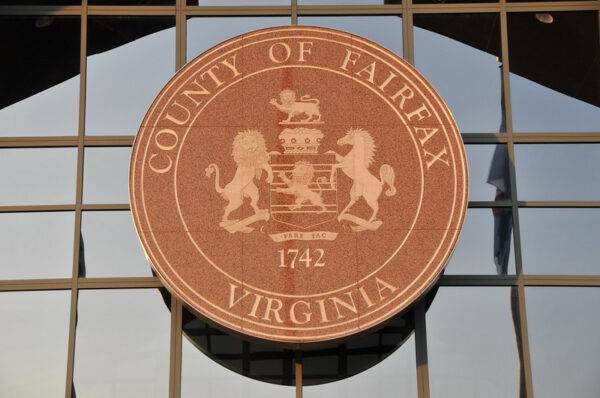
(Updated at 12:25 p.m.) The Fairfax County Government Center, where county policy is created and official functions take place, is an imposing, modern-looking building. Above the main doors is the county seal: a royal-looking crest with lions, a horse, and the date “1742.”
Unlike the building, the seal is of a different time. Adopted seven decades ago, it bears a version of the coat of arms belonging to Thomas Fairfax, the sixth Lord Fairfax and a slaveholding British loyalist who once owned much of the land that makes up Fairfax County today.
As neighboring counties and cities reexamine their logos and symbols, it seems like only a matter of time before Fairfax County faces its own questions.
When asked if there’s been discussion about further research into the county logo, representatives of the Fairfax County History Commission said it’s not on the agenda or a priority right now. The commission is currently undertaking an inventory of local African American history after completing one about Confederate names on public places.
Fairfax County Board of Supervisors Chairman Jeff McKay says, unlike with the use of Confederate names and symbols, officials have not heard any objections to the county seal from the community:
America was unfortunately built in part through the oppression of people of color. We cannot separate this history from Fairfax County, but we can listen to the community on what symbols are continuing to create divisiveness and inequity. Symbols of the Confederacy, for example, do not speak to the County’s values today, so we are working to remove these through the proper processes. Currently, there are ongoing efforts to change road names as well as other Confederate symbols and the Board previously took action to remove the monument of John Quincy Marr from the courthouse. We have not heard from our community members that these same messages are felt from the County seal. We continue to invest significant resources into our historically underserved communities to ensure that everyone has the opportunity to thrive in Fairfax County.
The county selected the seal as its logo in 1949 ahead of an impending visit from the then-Lord Fairfax. It won over a dozen other seals belonging to the Fairfax family due to “its clarity when reproduced,” according to historical documents from Fairfax County Public Library’s Virginia Room.
A county flag with the seal was unveiled on June 13, 1968, the day before Flag Day, in response to repeated requests for a flag from county schools.
“We probably ought to have a Betsy Ross here to get the flag ready for Flag Day,” said Gil Shaw, the flag’s creator and the county’s director of information services at the time. “But the coat of arms of Thomas Lord Fairfax will soon fly over the lands he once owned and which became Fairfax County in 1742.”
Early colonial Virginia land history is admittingly a bit confusing due to the limited availability of written records and a lack of variety in names.
“The famous one, for our purposes, was the sixth Lord Fairfax,” explains Steve Harris-Scott, an assistant professor in George Mason University’s history department and an expert on colonial Virginia history.
“The nobles generally passed on their names to their first-born son, so when they took over the title, they were all the same names,” he said. “There was a Thomas Fairfax, first Lord Fairfax, then there was Thomas Fairfax, the second Lord Fairfax, etcetera.”
The sixth Lord Fairfax was born in England in 1693 to the fifth Lord Fairfax and Catherine Culpepper.
Through his mother’s side, he inherited about 5 million acres of land in 1710 known as the “Northern Neck,” which encompassed today’s Fairfax County. Taken from the indigenous people who had lived there for centuries, the land was a gift to Catherine’s father, Thomas Culpepper, from the restored King Charles II for his support during the English Civil War.
“[This land] is essentially bordered by the Rappahannock [River] on the south and the Potomac on the north,” Harris-Scott said.
However, Fairfax spent most of his life in England and didn’t move to Virginia until 1742, the date on the county’s logo. He also may never have resided in what is now Fairfax County, according to Harris-Scott. Read More



